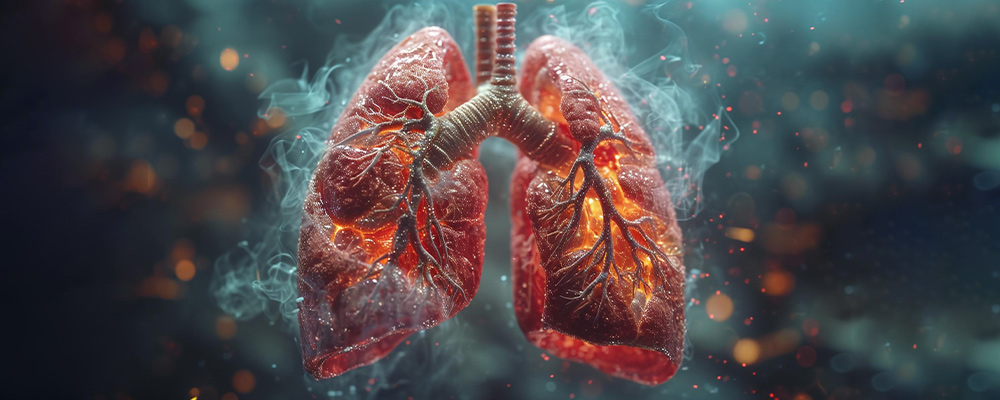
Causes of Pulmonary Hypertension
Pulmonary hypertension occurs when the blood pressure in the pulmonary arteries becomes elevated. This can be due to various underlying causes, classified into several groups:
- Primary (Idiopathic) Pulmonary Hypertension: This form of PH has no identifiable cause and is termed idiopathic. It is rare but severe, often progressing rapidly.
- Secondary Pulmonary Hypertension: This type is caused by other underlying health conditions. Common causes include:
- Left Heart Disease: Conditions like heart failure or mitral valve disease can lead to elevated pulmonary pressures.
- Chronic Lung Diseases: Lung diseases such as chronic obstructive pulmonary disease (COPD) or interstitial lung disease can cause secondary PH.
- Blood Clots: Pulmonary embolism can result in persistent pulmonary hypertension if not treated promptly.
- Autoimmune Diseases: Conditions such as scleroderma or lupus can be associated with PH.
- Pulmonary Vascular Diseases: These include conditions directly affecting the blood vessels of the lungs, such as pulmonary arterial hypertension (PAH).
- Other Causes: Genetic mutations, congenital heart defects, and exposure to certain drugs or toxins can also contribute to the development of pulmonary hypertension.
Symptoms of Pulmonary Hypertension
Recognizing the symptoms of pulmonary hypertension is essential for early diagnosis and management. The condition often manifests through a variety of signs, including:
- Shortness of Breath: Particularly during physical activity but can also occur at rest as the disease progresses.
- Fatigue: A general feeling of tiredness and reduced exercise capacity.
- Chest Pain: Often described as a dull ache or pressure, which may mimic angina.
- Dizziness or Fainting: Occurs due to insufficient blood flow to the brain.
- Swelling: Particularly in the legs and ankles, known as edema.
- Bluish Lips or Skin: Cyanosis, indicating a lack of oxygen in the blood.
The progression and severity of symptoms can vary, but they typically worsen over time if left untreated.
Pulmonary Hypertension Life Expectancy
The pulmonary hypertension life expectancy can be significantly affected by the underlying cause of the condition, its severity, and the effectiveness of treatment. Historically, pulmonary hypertension had a poor prognosis, with a median survival rate of about 1 year for PAH. However, advancements in medical treatments have improved outcomes.
For patients with secondary pulmonary hypertension, managing the underlying condition is crucial for improving pulmonary hypertension life expectancy. For example, effective treatment of heart failure or chronic lung disease can alleviate symptoms and slow disease progression.
In cases of idiopathic PAH, pulmonary hypertension life expectancy has improved with the advent of new therapies. According to recent data in the majority of PAH registries, idiopathic PAH (IPAH) accounted for 50-60% of all cases, making it the most prevalent subtype.
Prevention of Pulmonary Hypertension
While not all cases of pulmonary hypertension can be prevented, certain measures can reduce the risk or delay the onset of secondary PH. Preventive strategies include:
- Managing Chronic Conditions: Effectively treating heart disease, lung disease, and other health issues can prevent the development of secondary PH.
- Healthy Lifestyle: Adopting a heart-healthy diet, regular exercise, and avoiding smoking can reduce the risk of conditions that contribute to PH.
- Regular Check-ups: Monitoring for early signs of PH, particularly in high-risk individuals, can lead to early intervention and better management.
For those with genetic predispositions or a family history of PAH, genetic counseling and regular medical evaluations can be beneficial to enhance pulmonary hypertension life expectancy.
Treatment of Pulmonary Hypertension
Treatment for pulmonary hypertension aims to alleviate symptoms, improve quality of life, and enhance pulmonary hypertension life expectancy. The approach varies based on the type and cause of PH:
Pharmacologic Treatments:
- Vasodilators: These medications help relax and widen the blood vessels in the lungs, reducing pulmonary artery pressure. Common examples include endothelin receptor antagonists (e.g., bosentan), phosphodiesterase-5 inhibitors (e.g., sildenafil), and soluble guanylate cyclase stimulators (e.g., riociguat).
- Diuretics: Used to reduce fluid buildup and alleviate symptoms of heart failure associated with secondary PH.
- Anticoagulants: Blood thinners may be prescribed to prevent blood clots, particularly in patients with chronic thromboembolic pulmonary hypertension.
- Oxygen Therapy: Provides supplemental oxygen to improve oxygen levels in the blood, especially in advanced cases.
Non-pharmacologic Treatments:
- Lifestyle Modifications: Weight management, regular physical activity, and dietary changes can support overall health and improve symptoms.
- Surgical Interventions: In severe cases, procedures such as balloon atrial septostomy or lung transplantation may be considered.
- Pulmonary Rehabilitation: A structured program of exercise, education, and support to help patients manage symptoms and improve their quality of life.
Emerging Therapies:
Ongoing research is focused on developing new treatments and improving existing ones. Ongoing Clinical Trials are exploring novel drug therapies, gene therapies, and advanced techniques for managing and enhancing pulmonary hypertension life expectancy.
Conclusion
Understanding pulmonary hypertension life expectancy, outlook, and treatment options is essential for improving patient outcomes. While the condition can be severe, advances in medical science have significantly enhanced the management and prognosis for individuals with pulmonary hypertension. Early diagnosis, effective treatment, and lifestyle adjustments play a crucial role in extending pulmonary hypertension life expectancy and enhancing quality of life for those affected by this challenging condition. By staying informed and proactive, patients and healthcare providers can work together to manage pulmonary hypertension effectively and improve overall health outcomes.





